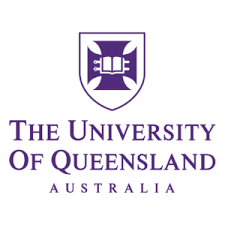Course provides an introduction to the implementation of fire safety in infrastructure, industry and vehicles. The focus of the course is to establish the knowledge and rationale followed when bringing safety into the design process.

Course Description:
Course provides an introduction to the implementation of fire safety in infrastructure, industry and vehicles.
The focus of the course is to establish the knowledge and rationale followed when bringing safety into the design process. [Includes Field Trip to the Queensland Fire & Rescue Training Centre]
Assumed Background:
Students are not expected to have any specific background knowledge other than a very basic understanding of fluid mechanics, thermodynamics, heat transfer, dynamics, statics and solid mechanics (as per typical 1st year courses)
Course Introduction
This course provides an introduction to the design of a fire safety strategy. A fire safety strategy is applicable to any form of infrastructure or process.
This course focuses on the built environment but it suitable to those interested in fire safety for transport systems (aircraft, trains, etc.), processes (manufacturing, petrochemical, energy, etc.) or environmental (wild land, waste processing plants, etc.).
This course covers all the basic principles used to analyse the performance of infrastructure/processes/systems when subject to a fire. This course requires students to engage with real open ended engineering problems.
Fire safety, as most new disciplines, does not have many textbooks or well-structured learning materials, therefore students will be expected to read and analyse technical literature that is not necessarily directly related to the problems presented.
Classroom discussions will provide an important supplement to course material and literature and students will be expected to use this knowledge in the analysis of course related problems. Your will therefore be expected to:
Independently search and locate technical material
Independently analyse technical material and draw pertinent conclusions
Independently draw on prior knowledge to address specifics problems presented
Actively participate in classroom discussions directed towards establishing sources of information that help analyse and solve the problems presented.
This course will address the following specific subjects areas:
Regulatory environment, social responsibility, contractual and design constraints
Life safety
Fire dynamics (ignition, fire growth, compartment fires, extinction)
Fire protection systems (detection, suppression)
Structural behaviour in fire (thermal load, structural performance)
Failure analysis
Assessment methods
We're committed to providing knowledge leadership for a better world and are striving towards building a better future for our students and community.
Our vibrant campuses boast world-class facilities, architecturally designed buildings and beautiful grounds. Enjoy learning and socialising in inspiring and supportive environments.
Our excellence in teaching and research is driven by our faculties, schools, institutes and centres.
Our global partnerships with universities and organisations are creating greater industry, student and development outcomes.
We strive to be accessible and welcoming, supporting all people to make their impact in the world.
Our excellence in teaching and research is driven by our faculties, schools, institutes and centres.
We’re addressing environmental, social and economic concerns and working towards a brighter future, on campus and beyond.
© 2025 coursetakers.com All Rights Reserved. Terms and Conditions of use | Privacy Policy